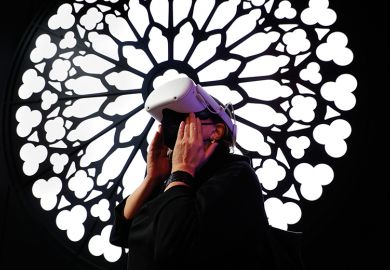Source: Reuters
Help at hand: it is ‘often the more prosaic’ use of technology that aids learning
Lecturers need to develop a better grasp of how technology can be used to facilitate learning, and better understand the way in which students use digital resources.
This is according to a paper by academics at Monash University in Melbourne, who surveyed more than 1,600 undergraduates at two universities in Australia and found that while digital technologies are a “central element of undergraduate education”, they are “clearly not ‘transforming’ the nature of university teaching and learning”.
“University educators perhaps need to temper enthusiasms for what might be achieved through technology-enabled learning and develop better understandings of the realities of students’ encounters with digital technology,” the paper, “What works and why? Student perceptions of ‘useful’ digital technology in university teaching and learning”, finds.
Published in the Studies in Higher Education journal, the research highlights a number of distinct digital “benefits” of technology identified by participating students. These include the “organising and managing the logistics of studying” (46.9 per cent of respondents say this is a benefit); “flexibility of place and location” of studying (32.7 per cent); and time-saving (30.6 per cent). Michael Henderson, senior lecturer in the Faculty of Education at Monash and co-author of the study, said that there was “considerable evidence” that technology was aiding learning but that it was not always “the cutting edge or headline use of technologies but often the more prosaic or mundane”.
Other findings from the same survey, which are to be published in a separate forthcoming paper by a team from Monash and Griffith University, in Queensland, reveal the ways in which students say technology is impeding their work.
The most commonly cited problem is “disruption” (28 per cent of respondents) – instances where technology has failed to function, preventing them from working. Diversion (25 per cent), where technology – either their own or someone else’s – distracts them from the task at hand, and difficulty (24 per cent), where technology might not be the most suitable tool for a scholarly task, are also cited.
Finally, 19 per cent of students said that technology could be a “detriment” to their learning, citing “death by PowerPoint” in lectures and poor quality digital learning materials as examples.
Register to continue
Why register?
- Registration is free and only takes a moment
- Once registered, you can read 3 articles a month
- Sign up for our newsletter
Subscribe
Or subscribe for unlimited access to:
- Unlimited access to news, views, insights & reviews
- Digital editions
- Digital access to THE’s university and college rankings analysis
Already registered or a current subscriber? Login





